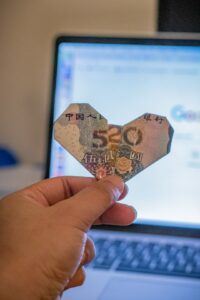The Role of Candlestick Patterns in Forex Trading
When it comes to forex trading, understanding market trends and patterns is crucial for making informed trading decisions. One of the most widely used tools in technical analysis is the candlestick chart, which provides traders with valuable insights into market sentiment and potential price movements. In this article, we will explore the role of candlestick patterns in forex trading and how they can be used to enhance trading strategies.
Candlestick charts originated in Japan in the 18th century and were used to analyze the price movements of rice. The method was later adopted by Western traders and has become an integral part of technical analysis in various financial markets, including forex.
Each candlestick on a chart represents a specific time period, such as one minute, one hour, or one day, depending on the trader’s preference. The candlestick is composed of four main components: the open, close, high, and low prices for that specific time period.
The body of the candlestick represents the difference between the open and close prices. If the close price is higher than the open price, the body is typically colored green or white, indicating a bullish or positive sentiment. Conversely, if the close price is lower than the open price, the body is usually colored red or black, indicating a bearish or negative sentiment.
The wicks or shadows of the candlestick represent the high and low prices during the specific time period. The upper wick extends from the top of the body to the highest price, while the lower wick extends from the bottom of the body to the lowest price. These wicks provide additional information about the market’s volatility and the strength of the bulls or bears.
Candlestick patterns are formed by the arrangement of multiple candlesticks on a chart, and they provide traders with valuable insights into potential market reversals or continuations. There are numerous candlestick patterns, each with its own interpretation and significance. Here are a few commonly used candlestick patterns in forex trading:
1. Doji: A doji is formed when the open and close prices are virtually the same or very close. It indicates indecision in the market and can signal a potential trend reversal.
2. Hammer: A hammer is characterized by a small body and a long lower wick, resembling a hammer. It indicates a potential bullish reversal after a downtrend.
3. Shooting Star: A shooting star is the opposite of a hammer, with a small body and a long upper wick. It suggests a potential bearish reversal after an uptrend.
4. Engulfing Pattern: An engulfing pattern occurs when a small candlestick is engulfed by a larger candlestick. It signals a potential trend reversal.
5. Morning Star: A morning star pattern is a bullish reversal pattern that consists of a long bearish candlestick, followed by a small-bodied candlestick, and a long bullish candlestick. It indicates a potential trend reversal from bearish to bullish.
These are just a few examples of candlestick patterns, and there are many more that traders use to analyze market sentiment and make trading decisions. It is important to note that candlestick patterns should not be used in isolation but should be combined with other technical indicators and analysis tools for more accurate predictions.
In conclusion, candlestick patterns play a crucial role in forex trading as they provide traders with valuable insights into market sentiment and potential price movements. By understanding and interpreting these patterns, traders can make more informed trading decisions and enhance their overall trading strategies. However, it is important to remember that candlestick patterns should be used in conjunction with other technical analysis tools and indicators for a comprehensive view of the market.






